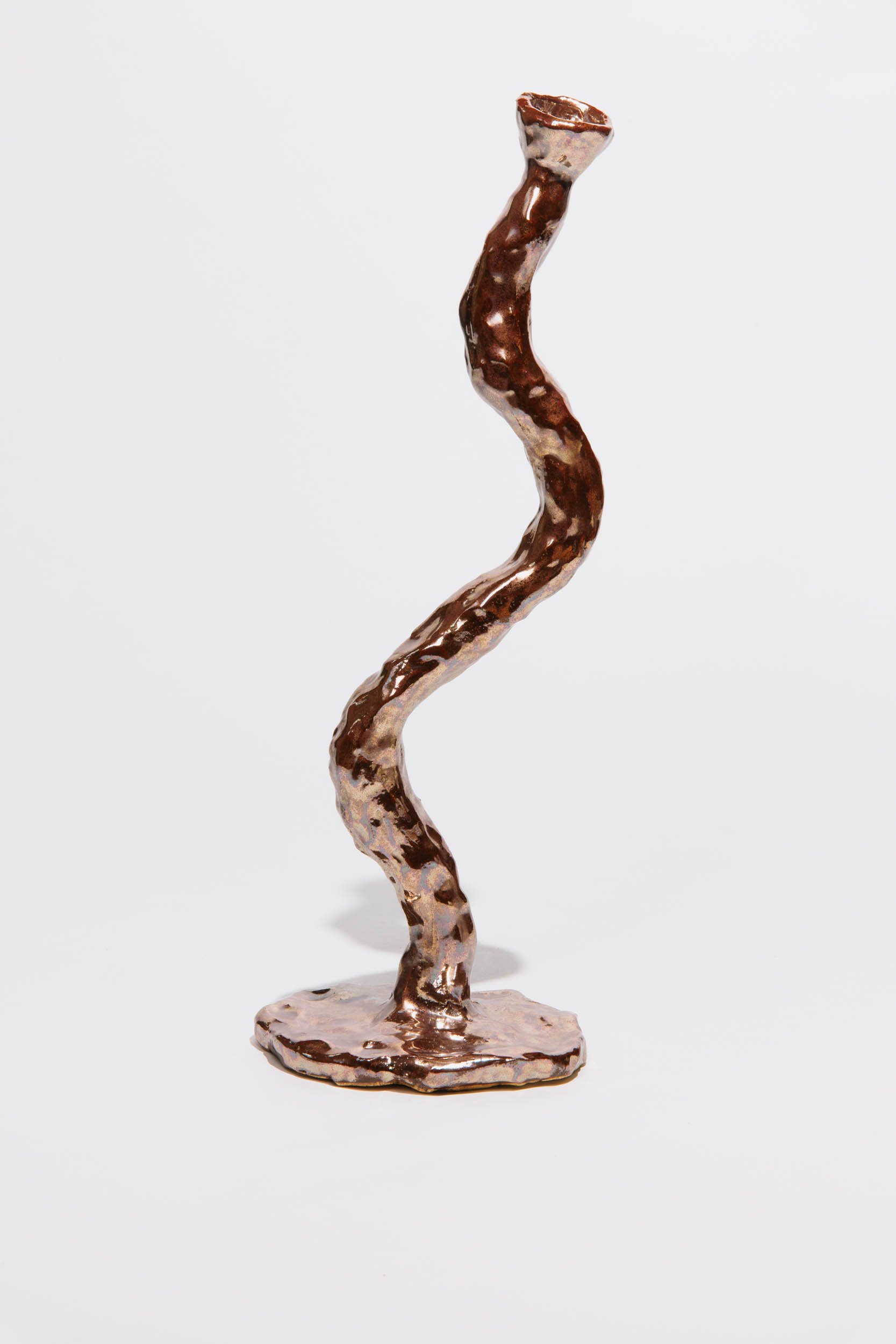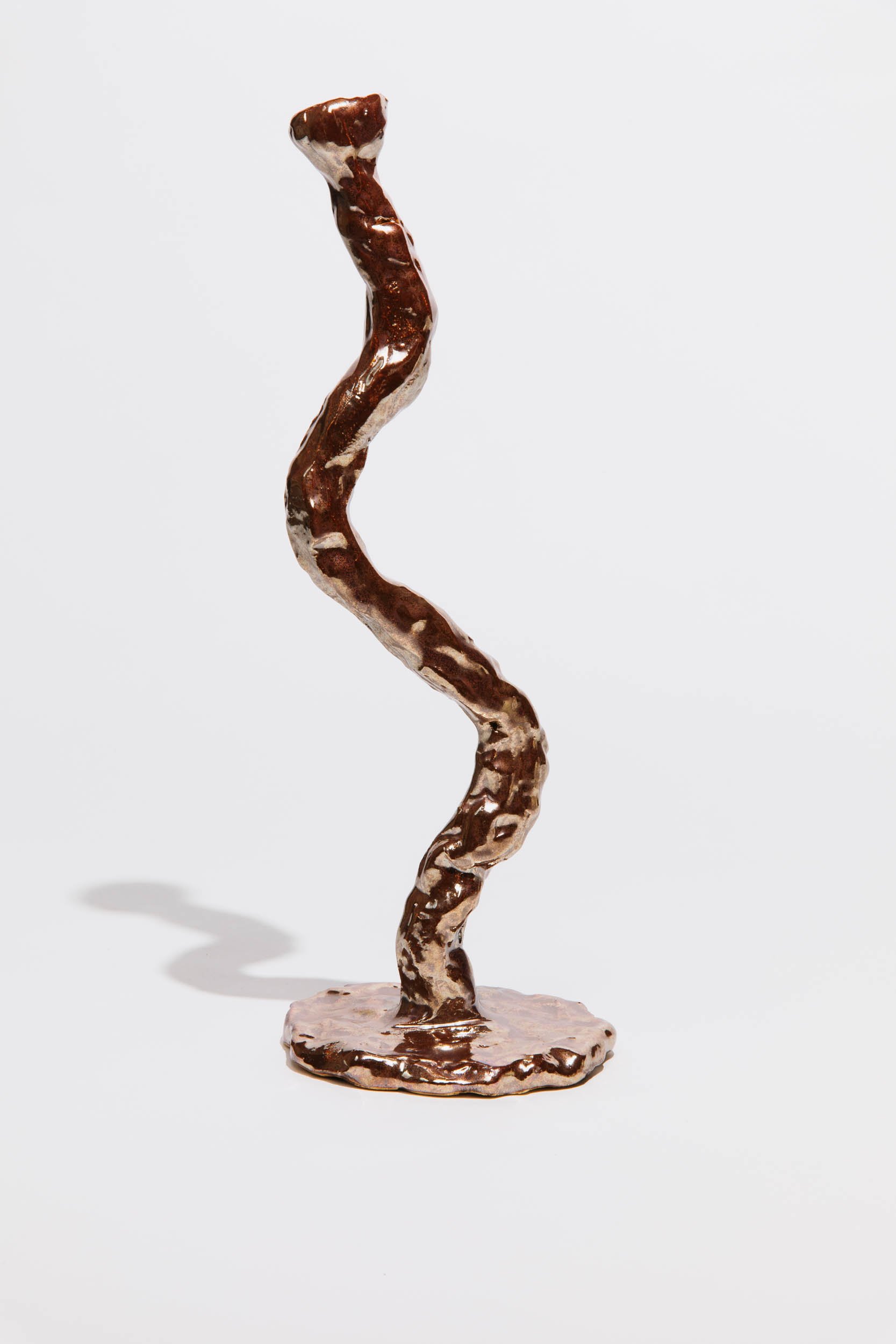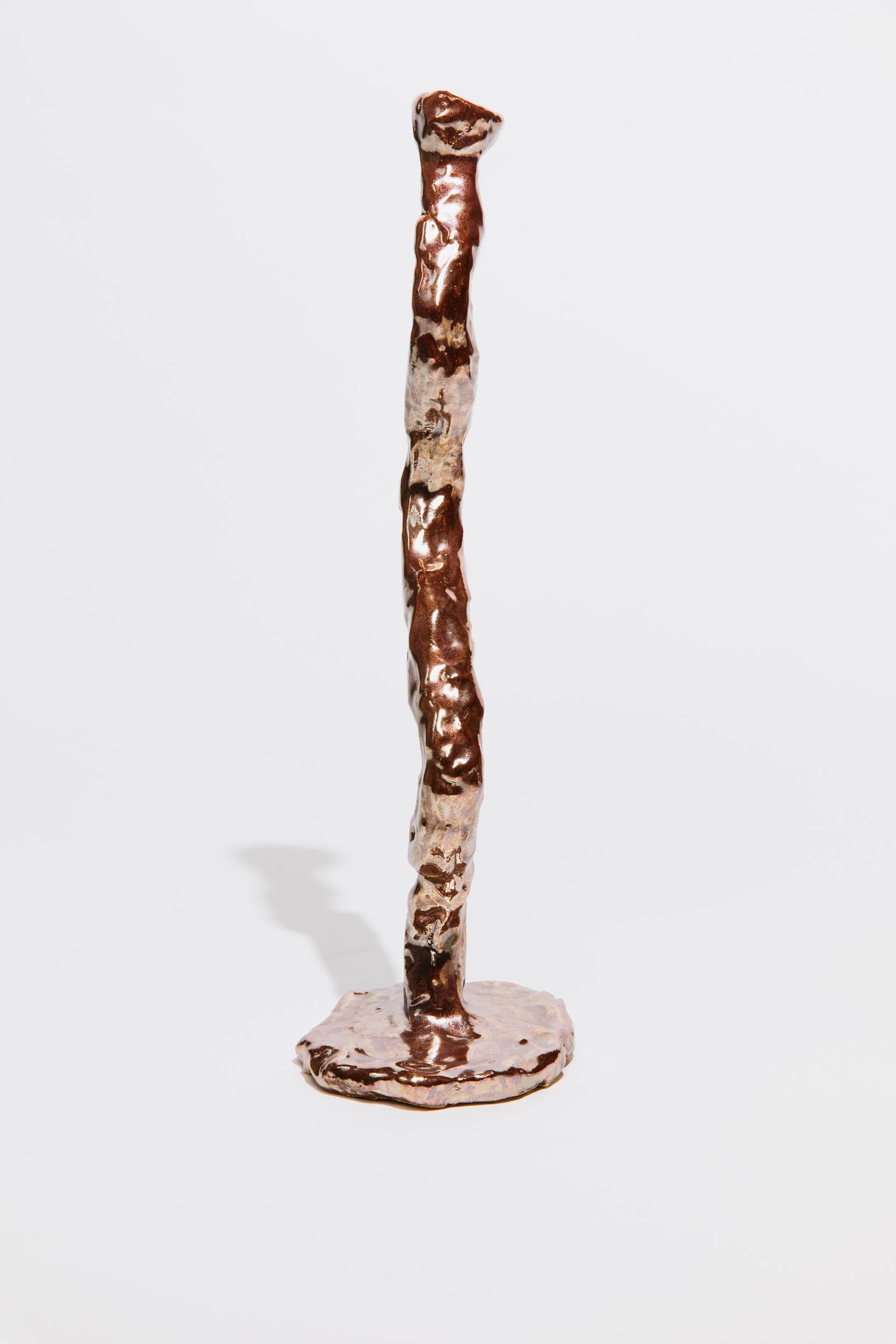Anna Riess, 'Dancer', ceramic object, 2024



Anna Riess, 'Dancer', ceramic object, 2024
Dancer is a candleholder in motion—ceramic stretched to its limits, rising and twisting like a snake suspended in air. Shaped by hand and instinct, it defies the heaviness of its material, moving instead with a lightness that feels almost impossible. Waves of clay curve and dip in rhythm, each bend a gesture of freedom, each fold a step in a dance, shining - because of its metallic glaze.
Unlike the grounded presence of the human body—Anna Riess’s own included—Dancer embodies release. It moves where she cannot, unbound by gravity or structure. The form becomes a kind of choreography in clay: wild, elegant, and full of tension. It catches light and shadow as it spirals, holding space for a single flame like a breath caught mid-motion.
At once functional and lyrical, Dancer is a testament to what the body dreams of doing—stretching beyond itself, arching toward air, moving with abandon. It is a celebration of motion, form, and the quiet rebellion of clay refusing to stay still.
Anna Riess is a multidisciplinary artist and cultural anthropologist based in Vienna. Her work explores themes of embodiment, emotion, and interbodily relations through materials like clay, metal, and textiles. Deeply influenced by her experience of motherhood, she transforms everyday objects into symbolic forms - one of her gestures she describes as the “nippelization of the everyday.”
Riess is the co-founder of the Claygroundretreat and the creator of Circle of Clay, a workshop series she has led at institutions such as the Museum of Applied Arts in Vienna or the Hotel Kai36 in Graz. Her workshops invite participants—regardless of prior experience—to develop their own sculptural language through hands-on engagement with clay.
Her sculptural objects possess a strong visual identity and tactile presence, marked by a recognizable aesthetic and a willingness to push the boundaries of material behavior. Especially drawn to the tactility of clay, Riess explores how movement and fluidity can be captured in form—leaving the trace of the hand visible in its hardened state. With a strong interest in local materials and interdisciplinary exchange, her practice bridges artistic, social, and ecological concerns in both conceptual and applied ways.